Bone Formation and Anti-Inflammatory Properties of Iodine-Loaded Titanium Implants: An Animal Study
Abstract
1. Introduction
2. Materials and Methods
2.1. In Vitro Apatite Formation, and In Vivo Bone-Bonding, Bone Formation, and Safety Evaluation
2.1.1. In Vitro Evaluation of Apatite Formation Ability in SBF
2.1.2. Placed Implants and Surface Preparation
2.1.3. Surface Characterization of Placed Implants
2.1.4. Experimental Animals and Implant Placement Order
2.1.5. Bone-Bonding Strength Evaluation
2.1.6. Histological Bone Formation Evaluation
- a.
- Bone area occupancy (BAO)
- b.
- Bone-implant contact ratio (BIC)
2.1.7. Biosafety Evaluation by Blood Collection
2.2. In Vivo Anti-Inflammatory Evaluation
2.2.1. Placement Materials and Surface Preparation
2.2.2. Preparation of Bacterial Solution
2.2.3. Experimental Animals and Titanium Plate Placement Order
2.2.4. Histological Anti-Inflammatory Evaluation
2.3. Statistical Analysis
3. Results
3.1. In Vitro Apatite Formation, and In Vivo Bone-Bonding, Bone Formation, and Safety Evaluation
3.1.1. In Vitro Evaluation of Apatite Formation Ability
3.1.2. Surface Characterization of Placement Implants
3.1.3. Bone-Bonding Strength Evaluation
3.1.4. Histological Bone Formation Evaluation
- Bone area occupancy (BAO)
- b.
- Bone-implant contact ratio (BIC)
3.1.5. Blood Evaluation
3.2. In Vivo Anti-Inflammatory Evaluation
Histological Anti-Inflammatory Evaluation
4. Discussion
5. Conclusions
Author Contributions
Funding
Institutional Review Board Statement
Informed Consent Statement
Data Availability Statement
Conflicts of Interest
Abbreviations
| SBF | Simulated Body Fluid |
| FE-SEM | Field Emission Scanning Electron Microscope |
| EDX | Energy-dispersive X-ray spectroscopy |
| ISQ | Implant Stability Quotient |
| RFA | Resonance Frequency Analysis |
| BAO | Bone Area Occupancy |
| BIC | Bone-Implant Contact Ratio |
| TSH | Thyroid-Stimulating Hormone |
References
- Hanawa, T. Titanium-Tissue Interface Reaction and Its Control with Surface Treatment. Front. Bioeng. Biotechnol. 2019, 7, 170. [Google Scholar] [CrossRef] [PubMed]
- Kobatake, R.; Doi, K.; Wakamatsu, K.; Oki, Y.; Morita, K.; Tsuga, K. Comparative Implant Stability of a Novel Implant-Porous Titanium Complex and an Implant-Porous Hydroxyapatite Complex for Bone Reconstruction Material. J. Hard Tissue Biol. 2023, 32, 177–182. [Google Scholar] [CrossRef]
- Esposito, M.; Grusovin, M.G.; Worthington, H.V. Interventions for replacing missing teeth: Antibiotics at dental implant placement to prevent complications. Cochrane Database Syst. Rev. 2013, 2013, Cd004152. [Google Scholar] [CrossRef]
- Camps-Font, O.; Figueiredo, R.; Valmaseda-Castellón, E.; Gay-Escoda, C. Postoperative Infections After Dental Implant Placement: Prevalence, Clinical Features, and Treatment. Implant Dent. 2015, 24, 713–719. [Google Scholar] [CrossRef] [PubMed]
- Gómez-Barrachina, R.; Montiel-Company, J.M.; García-Sanz, V.; Almerich-Silla, J.M.; Paredes-Gallardo, V.; Bellot-Arcís, C. Titanium plate removal in orthognathic surgery: Prevalence, causes and risk factors. A systematic literature review and meta-analysis. Int. J. Oral Maxillofac. Surg. 2020, 49, 770–778. [Google Scholar] [CrossRef]
- Lang, N.P.; Pun, L.; Lau, K.Y.; Li, K.Y.; Wong, M.C. A systematic review on survival and success rates of implants placed immediately into fresh extraction sockets after at least 1 year. Clin. Oral Implants Res. 2012, 23 (Suppl. S5), 39–66. [Google Scholar] [CrossRef]
- Porter, A.E.; Hobbs, L.W.; Rosen, V.B.; Spector, M. The ultrastructure of the plasma-sprayed hydroxyapatite-bone interface predisposing to bone bonding. Biomaterials 2002, 23, 725–733. [Google Scholar] [CrossRef]
- Stepanovska, J.; Matejka, R.; Rosina, J.; Bacakova, L.; Kolarova, H. Treatments for enhancing the biocompatibility of titanium implants. Biomed. Pap. Med. Fac. Univ. Palacky Olomouc Czech Repub. 2020, 164, 23–33. [Google Scholar] [CrossRef]
- Kokubo, T.; Yamaguchi, S. Growth of Novel Ceramic Layers on Metals via Chemical and Heat Treatments for Inducing Various Biological Functions. Front. Bioeng. Biotechnol. 2015, 3, 176. [Google Scholar] [CrossRef]
- Kizuki, T.; Takadama, H.; Matsushita, T.; Nakamura, T.; Kokubo, T. Preparation of bioactive Ti metal surface enriched with calcium ions by chemical treatment. Acta Biomater. 2010, 6, 2836–2842. [Google Scholar] [CrossRef]
- Liu, D.; He, C.; Liu, Z.; Xu, W. Gentamicin coating of nanotubular anodized titanium implant reduces implant-related osteomyelitis and enhances bone biocompatibility in rabbits. Int. J. Nanomed. 2017, 12, 5461–5471. [Google Scholar] [CrossRef] [PubMed]
- Zheng, Y.; Li, J.; Liu, X.; Sun, J. Antimicrobial and osteogenic effect of Ag-implanted titanium with a nanostructured surface. Int. J. Nanomed. 2012, 7, 875–884. [Google Scholar] [CrossRef] [PubMed]
- Shirai, T.; Shimizu, T.; Ohtani, K.; Zen, Y.; Takaya, M.; Tsuchiya, H. Antibacterial iodine-supported titanium implants. Acta Biomater. 2011, 7, 1928–1933. [Google Scholar] [CrossRef] [PubMed]
- Cochis, A.; Azzimonti, B.; Della Valle, C.; De Giglio, E.; Bloise, N.; Visai, L.; Cometa, S.; Rimondini, L.; Chiesa, R. The effect of silver or gallium doped titanium against the multidrug resistant Acinetobacter baumannii. Biomaterials 2016, 80, 80–95. [Google Scholar] [CrossRef]
- Kokubo, T.; Pattanayak, D.K.; Yamaguchi, S.; Takadama, H.; Matsushita, T.; Kawai, T.; Takemoto, M.; Fujibayashi, S.; Nakamura, T. Positively charged bioactive Ti metal prepared by simple chemical and heat treatments. J. R. Soc. Interface 2010, 7 (Suppl. S5), S503–S513. [Google Scholar] [CrossRef]
- Wu, C.; Chen, M.; Zheng, T.; Yang, X. Effect of surface roughness on the initial response of MC3T3-E1 cells cultured on polished titanium alloy. Biomed. Mater. Eng. 2015, 26 (Suppl. S1), S155–S164. [Google Scholar] [CrossRef]
- Vandrovcová, M.; Bačáková, L. Adhesion, growth and differentiation of osteoblasts on surface-modified materials developed for bone implants. Physiol. Res. 2011, 60, 403–417. [Google Scholar] [CrossRef]
- Coelho, P.G.; Granjeiro, J.M.; Romanos, G.E.; Suzuki, M.; Silva, N.R.; Cardaropoli, G.; Thompson, V.P.; Lemons, J.E. Basic research methods and current trends of dental implant surfaces. J. Biomed. Mater. Res. B Appl. Biomater. 2009, 88, 579–596. [Google Scholar] [CrossRef]
- Oliveira, D.P.; Palmieri, A.; Carinci, F.; Bolfarini, C. Osteoblasts behavior on chemically treated commercially pure titanium surfaces. J. Biomed. Mater. Res. A 2014, 102, 1816–1822. [Google Scholar] [CrossRef]
- Sawai, Y.; Yamaguchi, S.; Inoue, K.; Kato-Kogoe, N.; Yamada, K.; Shimada, N.; Ito, M.; Nakano, H.; Ueno, T. Enhancement of in vitro antibacterial activity and bioactivity of iodine-loaded titanium by micro-scale regulation using mixed-acid treatment. J. Biomed. Mater. Res. A 2024, 112, 685–699. [Google Scholar] [CrossRef]
- Yamaguchi, S.; Le, P.T.M.; Shintani, S.A.; Takadama, H.; Ito, M.; Ferraris, S.; Spriano, S. Iodine-Loaded Calcium Titanate for Bone Repair with Sustainable Antibacterial Activity Prepared by Solution and Heat Treatment. Nanomaterials 2021, 11, 2199. [Google Scholar] [CrossRef]
- Tsuchiya, H.; Shirai, T.; Nishida, H.; Murakami, H.; Kabata, T.; Yamamoto, N.; Watanabe, K.; Nakase, J. Innovative antimicrobial coating of titanium implants with iodine. J. Orthop. Sci. 2012, 17, 595–604. [Google Scholar] [CrossRef]
- Kokubo, T.; Takadama, H. How useful is SBF in predicting in vivo bone bioactivity? Biomaterials 2006, 27, 2907–2915. [Google Scholar] [CrossRef] [PubMed]
- Meredith, N. Assessment of implant stability as a prognostic determinant. Int. J. Prosthodont. 1998, 11, 491–501. [Google Scholar]
- Glauser, R.; Rée, A.; Lundgren, A.; Gottlow, J.; Hämmerle, C.H.; Schärer, P. Immediate occlusal loading of Brånemark implants applied in various jawbone regions: A prospective, 1-year clinical study. Clin. Implant Dent. Relat. Res. 2001, 3, 204–213. [Google Scholar] [CrossRef] [PubMed]
- Quaranta, A.; Iezzi, G.; Scarano, A.; Coelho, P.G.; Vozza, I.; Marincola, M.; Piattelli, A. A histomorphometric study of nanothickness and plasma-sprayed calcium-phosphorous-coated implant surfaces in rabbit bone. J. Periodontol. 2010, 81, 556–561. [Google Scholar] [CrossRef] [PubMed]
- Duyck, J.; Vandamme, K. The effect of loading on peri-implant bone: A critical review of the literature. J. Oral Rehabil. 2014, 41, 783–794. [Google Scholar] [CrossRef]
- Fujibayashi, S.; Neo, M.; Kim, H.M.; Kokubo, T.; Nakamura, T. A comparative study between in vivo bone ingrowth and in vitro apatite formation on Na2O-CaO-SiO2 glasses. Biomaterials 2003, 24, 1349–1356. [Google Scholar] [CrossRef]
- Lukaszewska-Kuska, M.; Wirstlein, P.; Majchrowski, R.; Dorocka-Bobkowska, B. The effects of titanium topography and chemical composition on human osteoblast cell. Physiol. Res. 2021, 70, 413–423. [Google Scholar] [CrossRef]
- Smeets, R.; Stadlinger, B.; Schwarz, F.; Beck-Broichsitter, B.; Jung, O.; Precht, C.; Kloss, F.; Gröbe, A.; Heiland, M.; Ebker, T. Impact of Dental Implant Surface Modifications on Osseointegration. BioMed Res. Int. 2016, 2016, 6285620. [Google Scholar] [CrossRef]
- Salou, L.; Hoornaert, A.; Louarn, G.; Layrolle, P. Enhanced osseointegration of titanium implants with nanostructured surfaces: An experimental study in rabbits. Acta Biomater. 2015, 11, 494–502. [Google Scholar] [CrossRef]
- Balleri, P.; Cozzolino, A.; Ghelli, L.; Momicchioli, G.; Varriale, A. Stability measurements of osseointegrated implants using Osstell in partially edentulous jaws after 1 year of loading: A pilot study. Clin. Implant Dent. Relat. Res. 2002, 4, 128–132. [Google Scholar] [CrossRef]
- Meredith, N.; Alleyne, D.; Cawley, P. Quantitative determination of the stability of the implant-tissue interface using resonance frequency analysis. Clin. Oral Implants Res. 1996, 7, 261–267. [Google Scholar] [CrossRef]
- Matsumoto, K.; Inoue, K.; Imagawa, N.; Nakajima, Y.; Nakano, H.; Ueno, T. Examination of factor to influence dental implant stability quotient change. J. Hard Tissue Biol. 2020, 29, 131–134. [Google Scholar] [CrossRef]
- The Osstell ISQ Scale. Evidence-Based. Available online: https://www.osstell.com/clinical-guidelines/the-osstell-isq-scale/ (accessed on 3 July 2025).
- Swami, V.; Vijayaraghavan, V.; Swami, V. Current trends to measure implant stability. J. Indian Prosthodont. Soc. 2016, 16, 124–130. [Google Scholar] [CrossRef] [PubMed]
- Alsabeeha, N.H.; De Silva, R.K.; Thomson, W.M.; Payne, A.G. Primary stability measurements of single implants in the midline of the edentulous mandible for overdentures. Clin. Oral Implants Res. 2010, 21, 563–566. [Google Scholar] [CrossRef] [PubMed]
- Moreira, A.; Rosa, J.; Freitas, F.; Francisco, H.; Luís, H.; Caramês, J. Influence of implant design, length, diameter, and anatomic region on implant stability: A randomized clinical trial. Rev. Port. Estomatol. Med. Dent. Cir. Maxilofac. 2021, 62, 9–15. [Google Scholar] [CrossRef]
- Ohta, K.; Takechi, M.; Minami, M.; Shigeishi, H.; Hiraoka, M.; Nishimura, M.; Kamata, N. Influence of factors related to implant stability detected by wireless resonance frequency analysis device. J. Oral Rehabil. 2010, 37, 131–137. [Google Scholar] [CrossRef]
- Shiffler, K.; Lee, D.; Rowan, M.; Aghaloo, T.; Pi-Anfruns, J.; Moy, P.K. Effect of length, diameter, intraoral location on implant stability. Oral Maxilofac. Surg. 2016, 122, e193–e198. [Google Scholar] [CrossRef]
- Winter, W.; Möhrle, S.; Holst, S.; Karl, M. Parameters of implant stability measurements based on resonance frequency and damping capacity: A comparative finite element analysis. Int. J. Oral Maxillofac. Implants 2010, 25, 532–539. [Google Scholar]
- Mesa, F.; Munoz, R.; Noguerol, B.; de Dios Luna, J.; Galindo, P.; O’Valle, F. Multivariate study of factors influencing primary dental implant stability. Clin. Oral Implants Res. 2008, 19, 196–200. [Google Scholar] [CrossRef]
- Farronato, D.; Manfredini, M.; Stocchero, M.; Caccia, M.; Azzi, L.; Farronato, M. Influence of Bone Quality, Drilling Protocol, Implant Diameter/Length on Primary Stability: An In Vitro Comparative Study on Insertion Torque and Resonance Frequency Analysis. J. Oral Implantol. 2020, 46, 182–189. [Google Scholar] [CrossRef] [PubMed]
- Silva, R.; Villalon, P.; Caceres, F. Effect of macro-design in the primary stability of short and extra-short implants using resonance frequency analysis. An ex vivo study. J. Oral Biol. Craniofac. Res. 2020, 10, 603–607. [Google Scholar] [CrossRef]
- Huang, H.; Wu, G.; Hunziker, E. The clinical significance of implant stability quotient (ISQ) measurements: A literature review. J. Oral Biol. Craniofac. Res. 2020, 10, 629–638. [Google Scholar] [CrossRef]
- Johansson, C.B.; Gretzer, C.; Jimbo, R.; Mattisson, I.; Ahlberg, E. Enhanced implant integration with hierarchically structured implants: A pilot study in rabbits. Clin. Oral Implants Res. 2012, 23, 943–953. [Google Scholar] [CrossRef] [PubMed]
- Kuroshima, S.; Nakano, T.; Ishimoto, T.; Sasaki, M.; Inoue, M.; Yasutake, M.; Sawase, T. Optimally oriented grooves on dental implants improve bone quality around implants under repetitive mechanical loading. Acta Biomater. 2017, 48, 433–444. [Google Scholar] [CrossRef]
- Andersen, S.; Karmisholt, J.; Bruun, N.H.; Riis, J.; Noahsen, P.; Westergaard, L.; Andersen, S.L. Interpretation of TSH and T4 for diagnosing minor alterations in thyroid function: A comparative analysis of two separate longitudinal cohorts. Thyroid. Res. 2022, 15, 19. [Google Scholar] [CrossRef]
- Bürgi, H. Iodine excess. Best Pract. Res. Clin. Endocrinol. Metab. 2010, 24, 107–115. [Google Scholar] [CrossRef]
- Robertson, D.; Smith, A.J. The microbiology of the acute dental abscess. J. Med. Microbiol. 2009, 58, 155–162. [Google Scholar] [CrossRef] [PubMed]
- Facklam, R. What happened to the streptococci: Overview of taxonomic and nomenclature changes. Clin. Microbiol. Rev. 2002, 15, 613–630. [Google Scholar] [CrossRef]
- Piecuch, J.F.; Arzadon, J.; Lieblich, S.E. Prophylactic antibiotics for third molar surgery: A supportive opinion. J. Oral Maxillofac. Surg. 1995, 53, 53–60. [Google Scholar] [CrossRef] [PubMed]

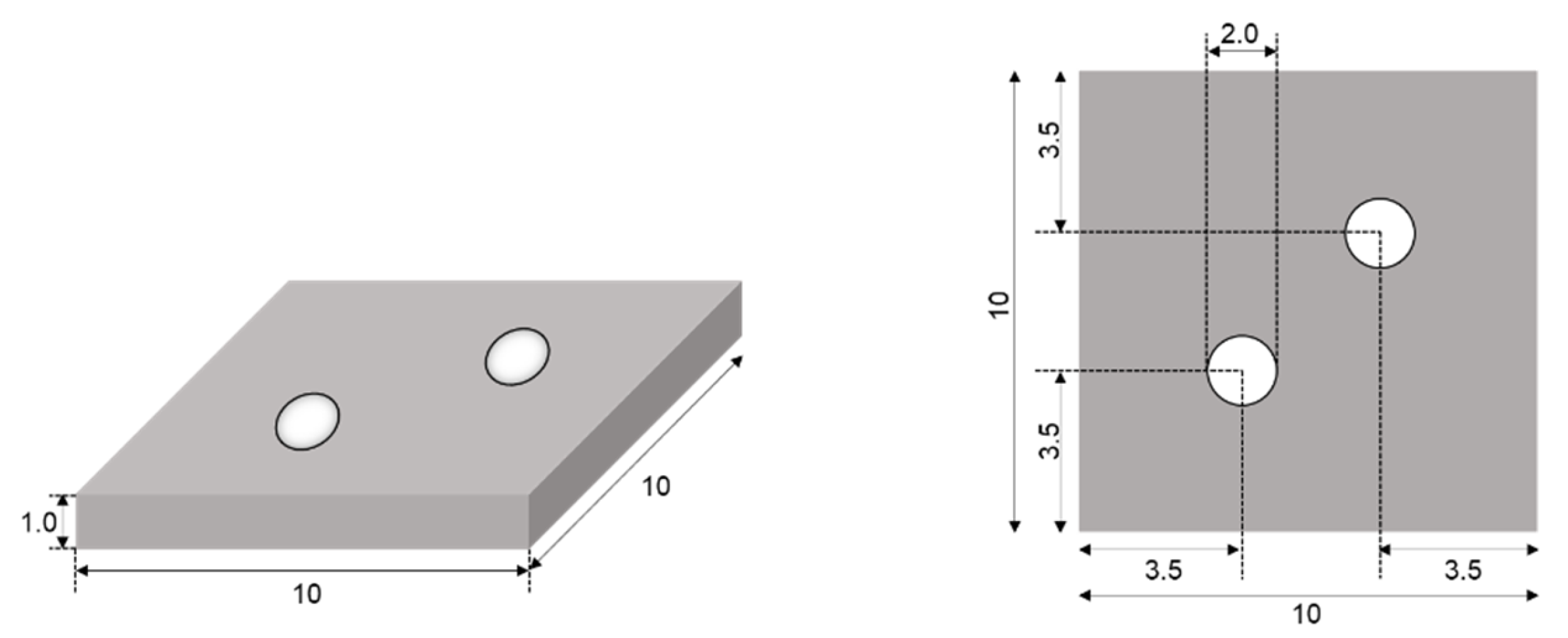

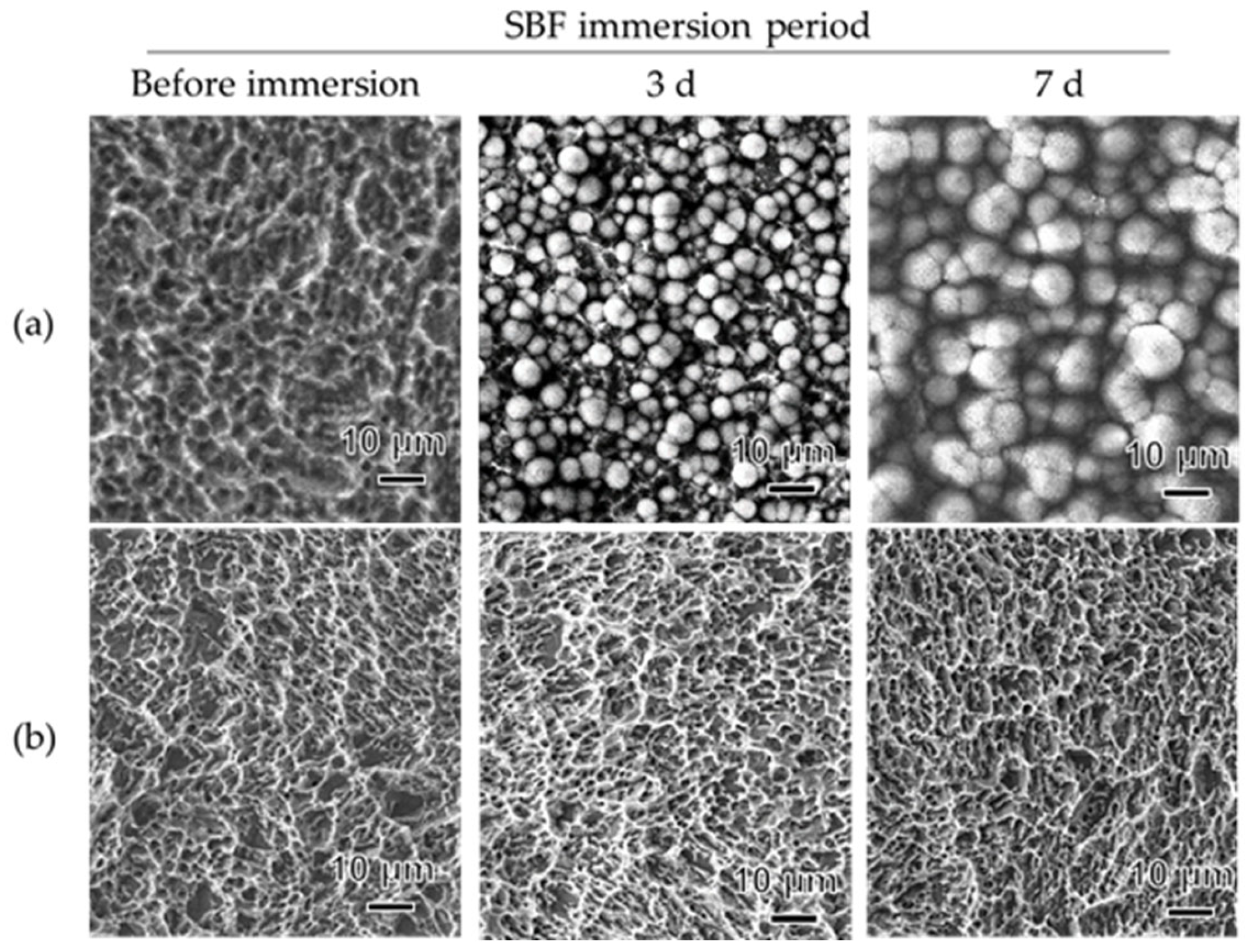
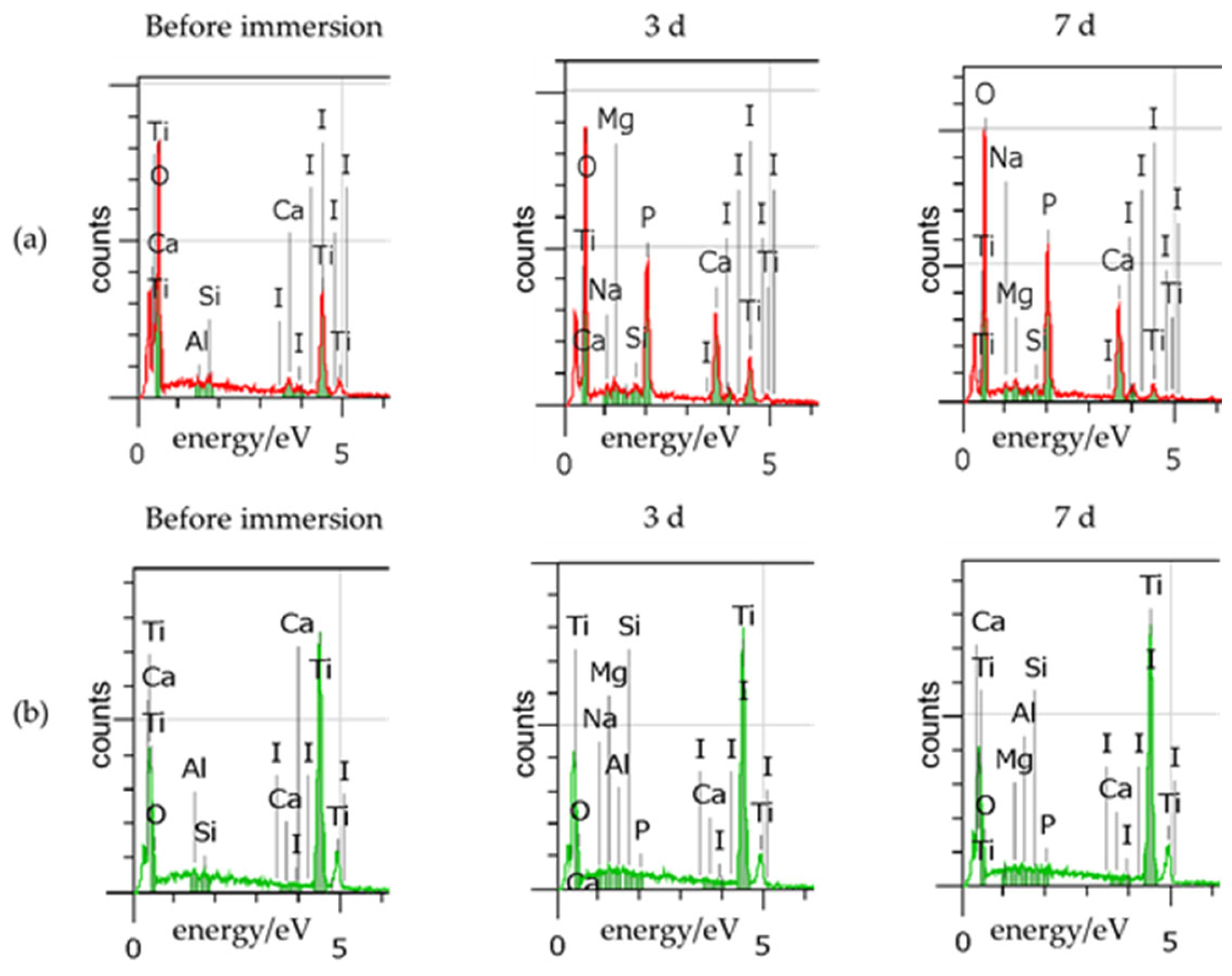
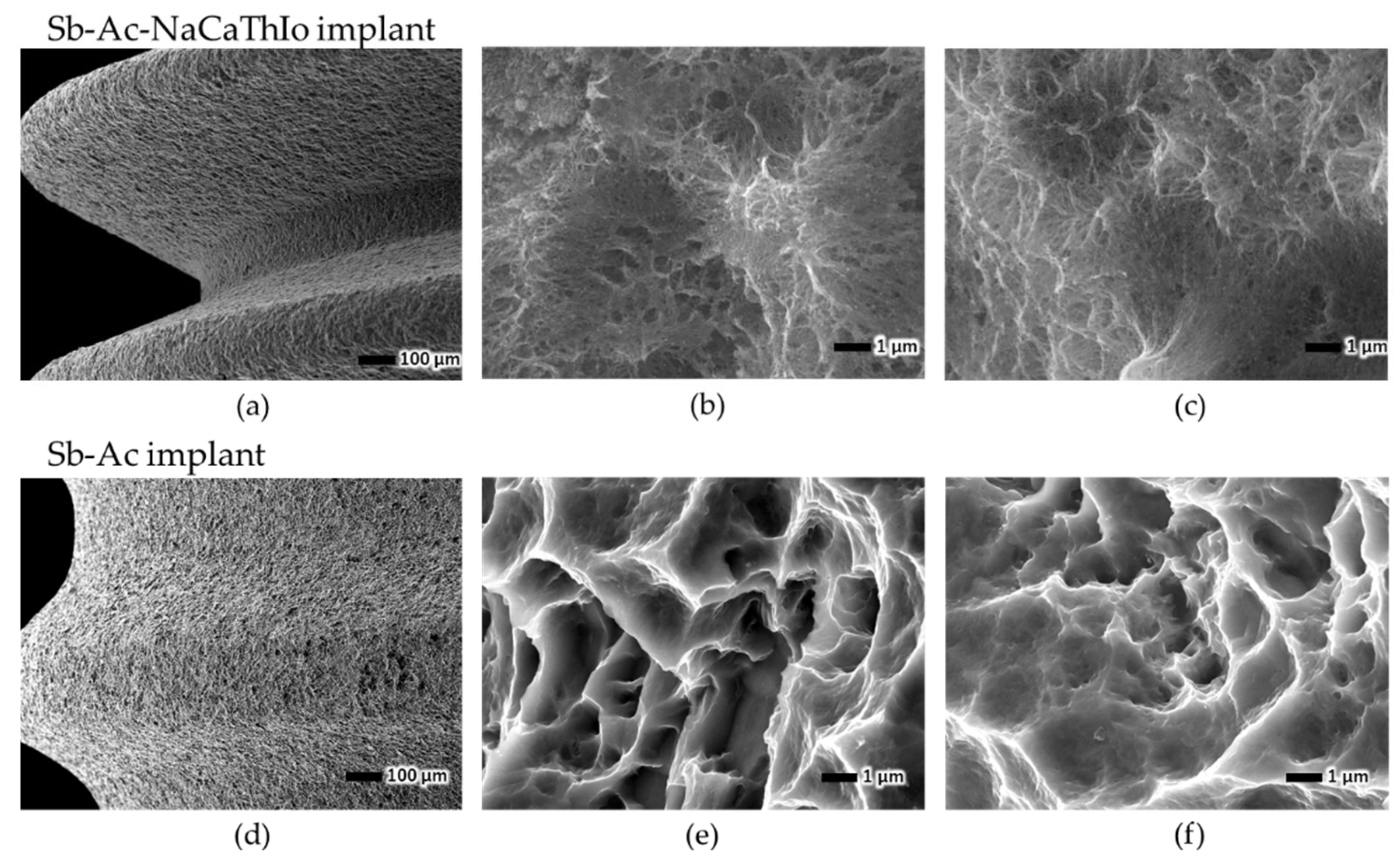
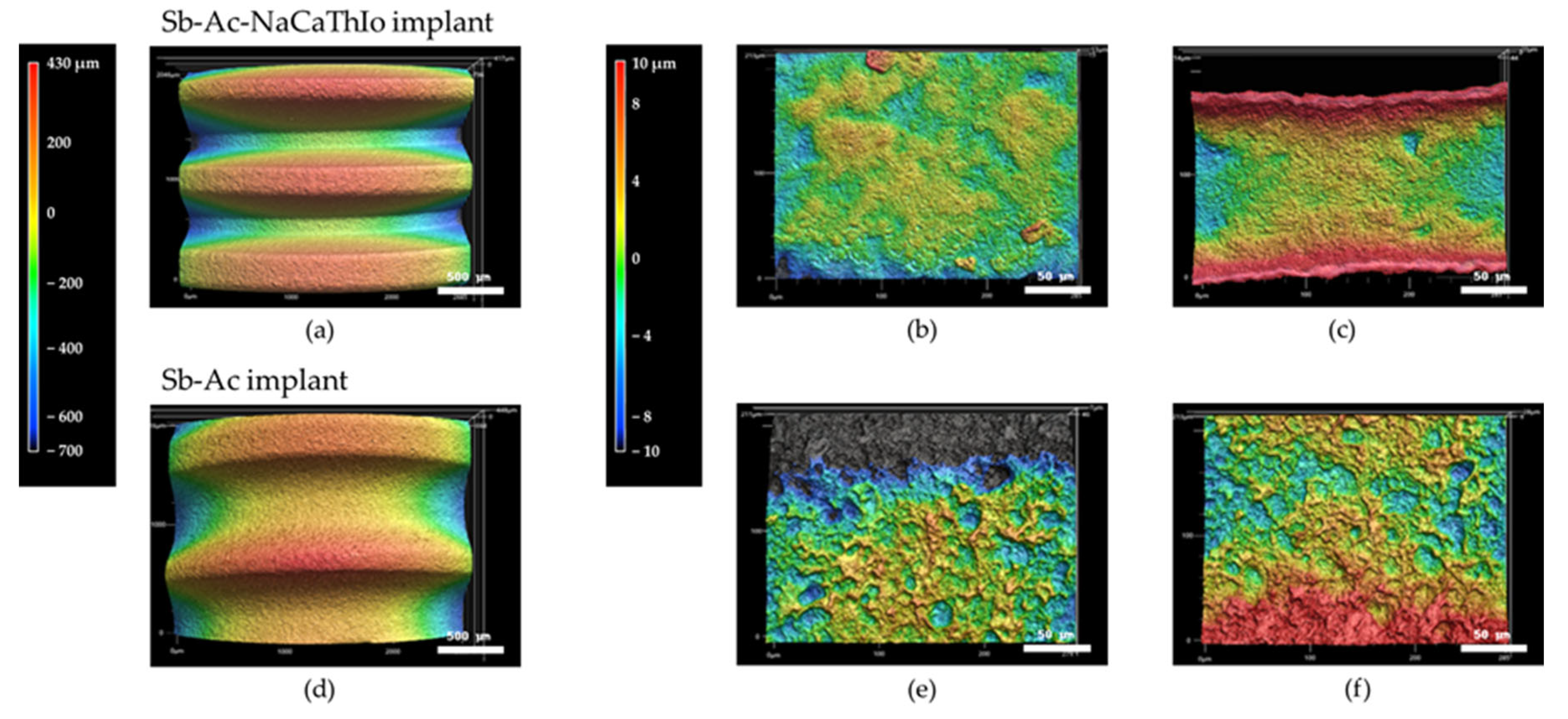


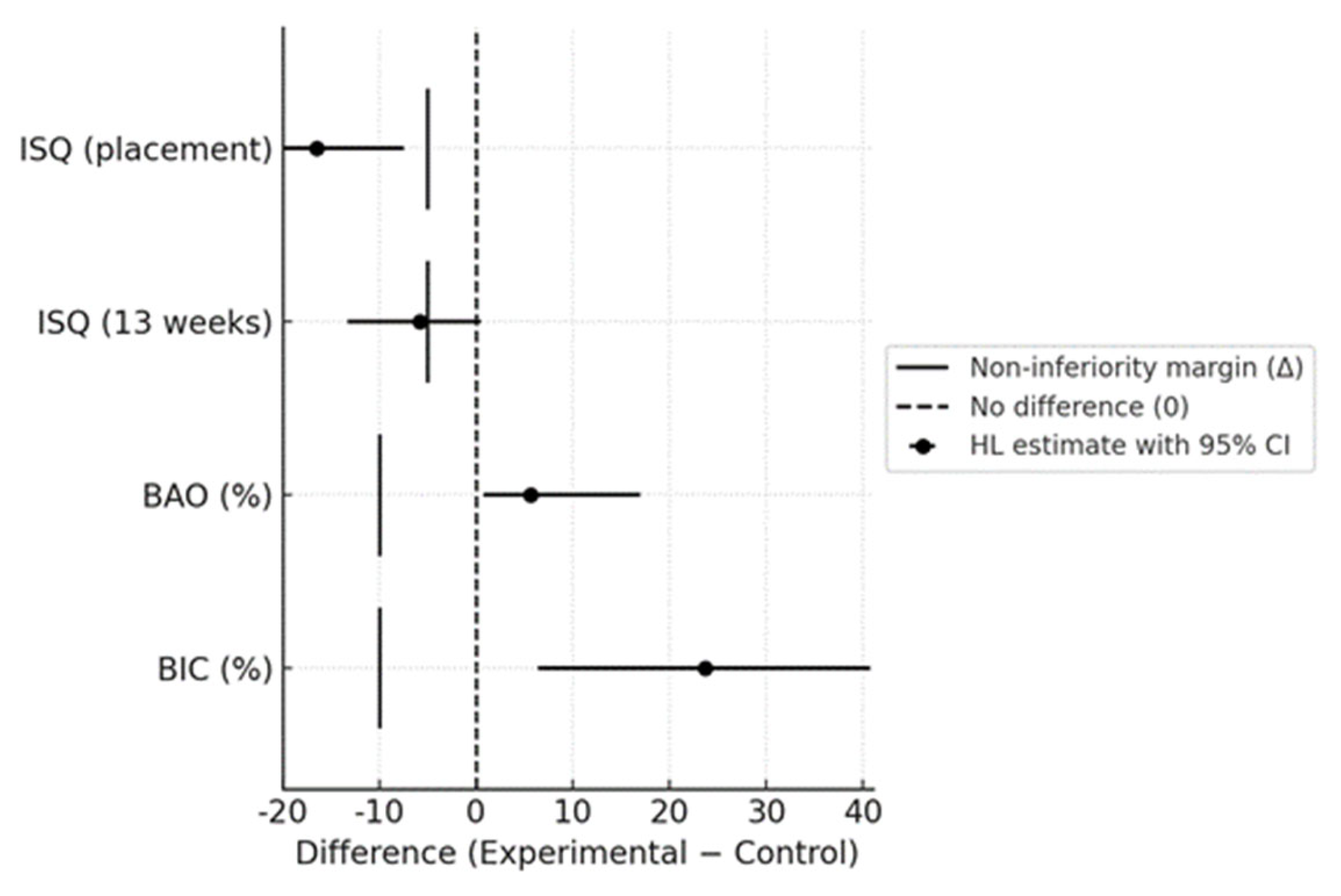

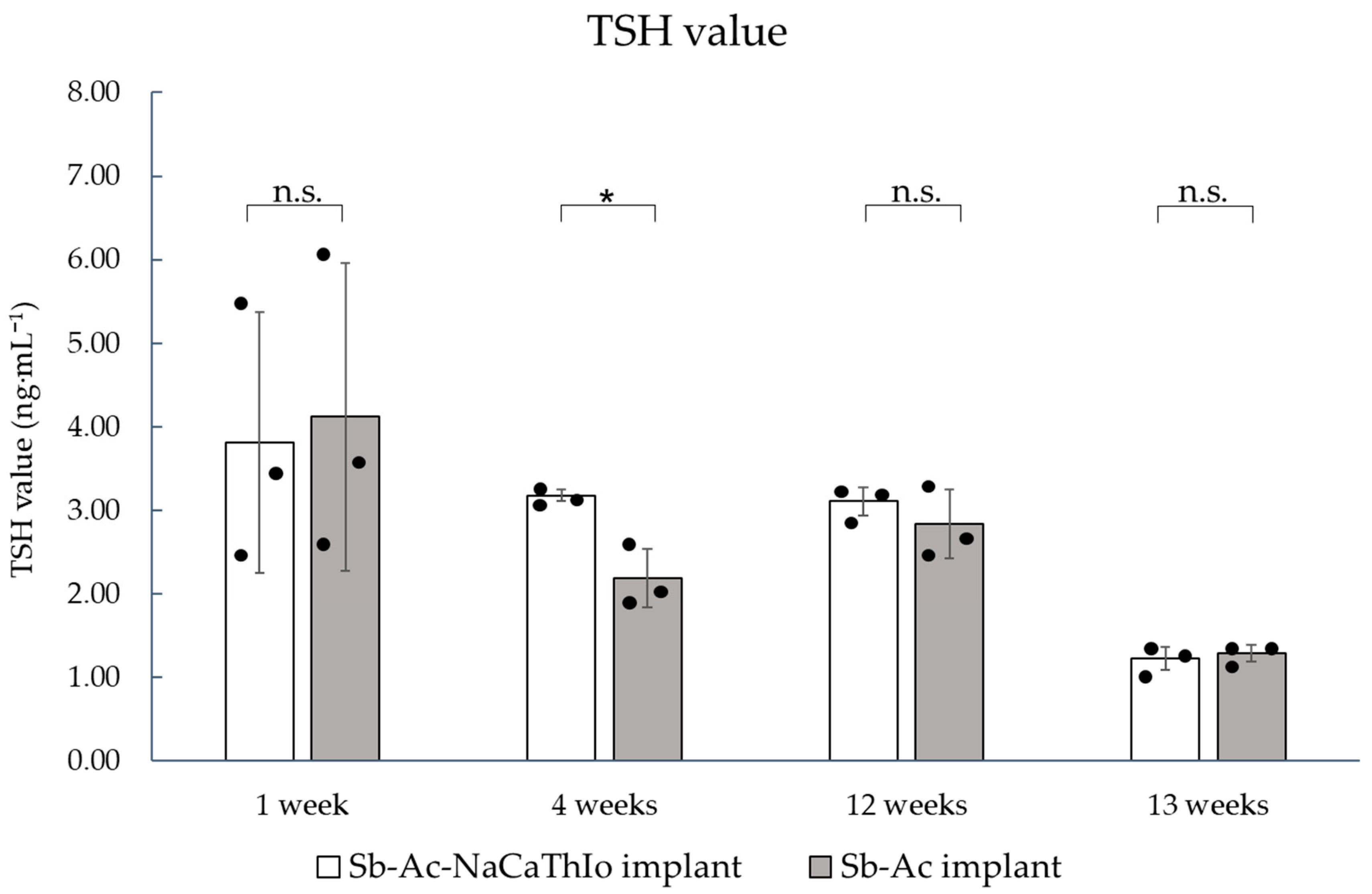
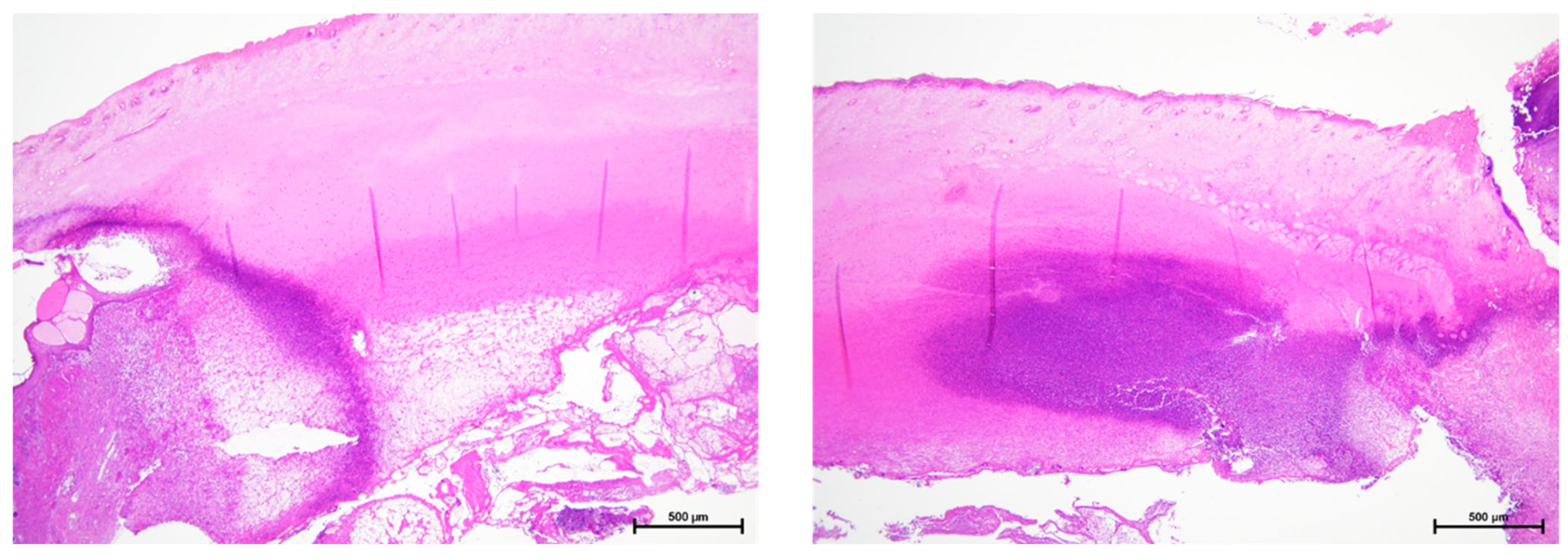

| 1st Treatment | 2nd Treatment | 3rd Treatment | 4th Treatment | |
|---|---|---|---|---|
| NaCaThIo treatment | 5 mol·L−1 NaOH | 100 mmol·L−1 CaCl2 | 600 °C, 1 h | 10 mmol·L−1 ICl3 |
| 60 °C, 24 h | 40 °C, 24 h | 80 °C, 24 h |
| Substrate | 1st Treatment | 2nd Treatment | 3rd Treatment |
|---|---|---|---|
| Sb-Ac-NaCaThIo titanium disks | Sandblast treatment | Oxalic acid etching treatment | NaCaThIo treatment |
| Sb-Ac titanium disks | Sandblast treatment | Oxalic acid etching treatment | - |
| Sb-Ac-NaCaThIo implants | Sandblast treatment | Oxalic acid etching treatment | NaCaThIo treatment |
| Sb-Ac implants | Sandblast treatment | Oxalic acid etching treatment | - |
| Substrate | 1st Treatment | 2nd Treatment |
|---|---|---|
| Ac-NaCaThIo titanium plate | Mixed acid etching treatment | NaCaThIo treatment |
| No treated titanium plate | - | - |
| Sample | Element (wt%) | |||||||||
|---|---|---|---|---|---|---|---|---|---|---|
| Surface Treatment | Immersion Period | O | Ti | Ca | P | Na | Mg | I | Al | Si |
| Sb-Ac-NaCaThIo | Before immersion | 66.7 | 30.2 | 2.6 | - | - | - | 0.8 | 0.3 | 0.4 |
| Sb-Ac-NaCaThIo | 3 d | 63.6 | 17.0 | 11.3 | 6.8 | 0.2 | 0.5 | U.D. | U.D. | 0.4 |
| Sb-Ac-NaCaThIo | 7 d | 63.7 | 6.3 | 16.8 | 11.7 | 0.4 | 0.5 | U.D. | U.D. | 0.4 |
| Sb-Ac | Before immersion | 4.5 | 94.9 | U.D. | - | - | - | U.D. | 0.2 | 0.2 |
| Sb-Ac | 3 d | 5.9 | 93.2 | U.D. | U.D. | U.D. | U.D. | U.D. | 0.2 | 0.1 |
| Sb-Ac | 7 d | 5.7 | 93.6 | U.D. | U.D. | U.D. | U.D. | U.D. | 0.1 | 0.2 |
Disclaimer/Publisher’s Note: The statements, opinions and data contained in all publications are solely those of the individual author(s) and contributor(s) and not of MDPI and/or the editor(s). MDPI and/or the editor(s) disclaim responsibility for any injury to people or property resulting from any ideas, methods, instructions or products referred to in the content. |
© 2025 by the authors. Licensee MDPI, Basel, Switzerland. This article is an open access article distributed under the terms and conditions of the Creative Commons Attribution (CC BY) license (https://creativecommons.org/licenses/by/4.0/).
Share and Cite
Yamada, K.; Inoue, K.; Shimada, N.; Kakutani, T.; Sawai, Y.; Imagawa-Fujimura, N.; Yamamoto, K.; Kato-Kogoe, N.; Yamaguchi, S.; Ueno, T. Bone Formation and Anti-Inflammatory Properties of Iodine-Loaded Titanium Implants: An Animal Study. Materials 2025, 18, 4836. https://doi.org/10.3390/ma18214836
Yamada K, Inoue K, Shimada N, Kakutani T, Sawai Y, Imagawa-Fujimura N, Yamamoto K, Kato-Kogoe N, Yamaguchi S, Ueno T. Bone Formation and Anti-Inflammatory Properties of Iodine-Loaded Titanium Implants: An Animal Study. Materials. 2025; 18(21):4836. https://doi.org/10.3390/ma18214836
Chicago/Turabian StyleYamada, Kazuto, Kazuya Inoue, Nanako Shimada, Tatsuya Kakutani, Yasuhisa Sawai, Naoko Imagawa-Fujimura, Kayoko Yamamoto, Nahoko Kato-Kogoe, Seiji Yamaguchi, and Takaaki Ueno. 2025. "Bone Formation and Anti-Inflammatory Properties of Iodine-Loaded Titanium Implants: An Animal Study" Materials 18, no. 21: 4836. https://doi.org/10.3390/ma18214836
APA StyleYamada, K., Inoue, K., Shimada, N., Kakutani, T., Sawai, Y., Imagawa-Fujimura, N., Yamamoto, K., Kato-Kogoe, N., Yamaguchi, S., & Ueno, T. (2025). Bone Formation and Anti-Inflammatory Properties of Iodine-Loaded Titanium Implants: An Animal Study. Materials, 18(21), 4836. https://doi.org/10.3390/ma18214836







